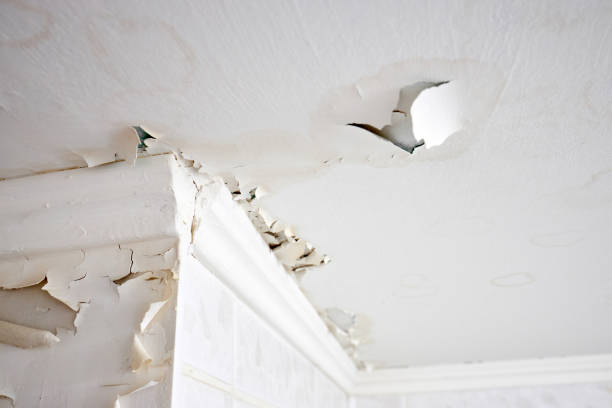How to Repair Roof Leakage?
by siteadmin

If you notice that your roof is leaking during heavy rain, make sure to have the right safety equipment. This includes an umbrella, a safety ladder, and nonslip shoes.
Look for leaks in your attic and crawl space with a flashlight. Look for water stains and signs of water intrusion around vents, chimneys and dormers.
Find the Leak
Water can leak from your ceiling and not necessarily where it appears. To accurately pinpoint its exact location.
Use a flashlight at daylight to inspect the insulation and the underside of the roof. Look for dampness, such as damp spots and rotted wood. You may also see black mold that thrives in moist environments.
If you cannot find your leak during a daytime inspection, contact someone for help. One person should remain inside the ceiling stain while another outside sprays the roof in sections with a garden hose until you can see an interior ceiling drip coming through the hole. Once you find it, mark it with a hammer!
Puncture the Bulge
Puncturing the bulge on your ceiling that collects water may seem counterintuitive, but it will allow the excess liquid to drain and relieve pressure in other areas of the ceiling. If you don't puncture it, the excess liquid will drain away and put pressure on other parts of the ceiling.
Place a bucket under your workstation to catch any water that may leak out. Then, using a puncturing screwdriver, locate the center of the hole and puncture it. Be careful when handling hot water that is leaking as it can cut into electrical wiring or even cause a hole to be made. Cover the area from the hole up to the roof peak. If necessary, move furniture before covering it.
Make a Temporary Patch
If you have access to your attic, crawlspace or basement, you could place a bucket under the water to prevent it from seeping through the walls and causing further damage.
A simple tarp can also be used to repair your roof. Cut a piece that covers the area to be repaired, leaving an inch or more on each side to ensure stability. Secure it to your roof with galvanized nails or staples, and then seal its perimeter with roofing sealant.
If you are missing shingles, you will need to devise a temporary solution immediately. Grab some plywood sheets, roofing tar, and two by fours from any hardware or home improvement store. These simple fixes can buy you time until a professional completes the permanent repair.
Move What You Can
If you have a bulge in the ceiling, water can collect there and cause havoc in your house. Relocate any furniture, carpeting, or clothing items to prevent further damage or mildew odor. Place buckets or trash cans nearby to catch any runoff. This will reduce damage caused by leakage. Lay a tarp from the problem area to the roof peak to stop any further leaks. This will also protect this area from harm while you are working on it.
Check for signs of wear on your roof's vent stack. These could include cracks, rust, or exposed nails.
5R Roofing
If you notice that your roof is leaking during heavy rain, make sure to have the right safety equipment. This includes an umbrella, a safety ladder, and nonslip shoes. Look for leaks in your attic and crawl space with a flashlight. Look for water stains and signs of water intrusion around vents, chimneys and dormers.…
Recent Posts
- Roofing Fresno California: Professional Contractors
- Roofers North Port FL
- Corpus Christi Roofing Co.
- Roofing Company Savannah Sheds Light on the Lifespan of Roofs: How Long Should a Roof Last?
- New Orleans Concreters Advocates for Stamped Concrete Driveways as the Ultimate Choice for Durability and Style
